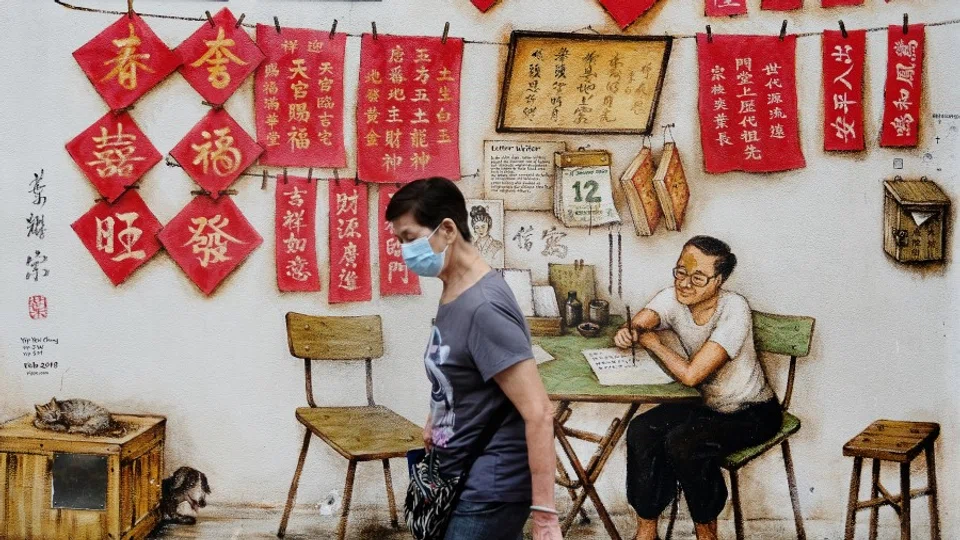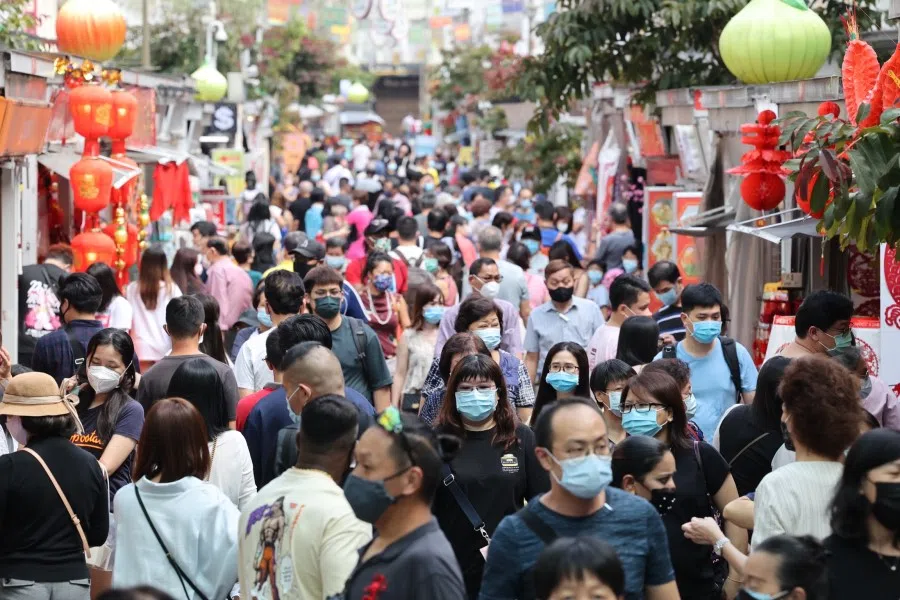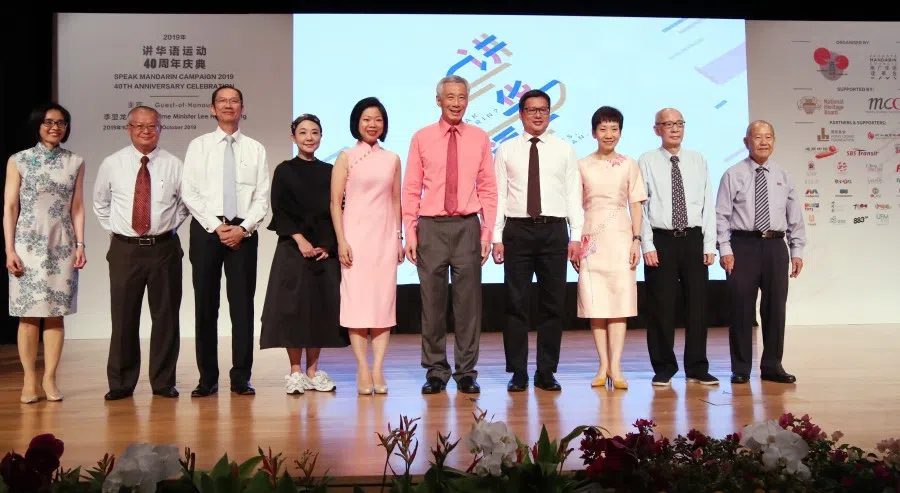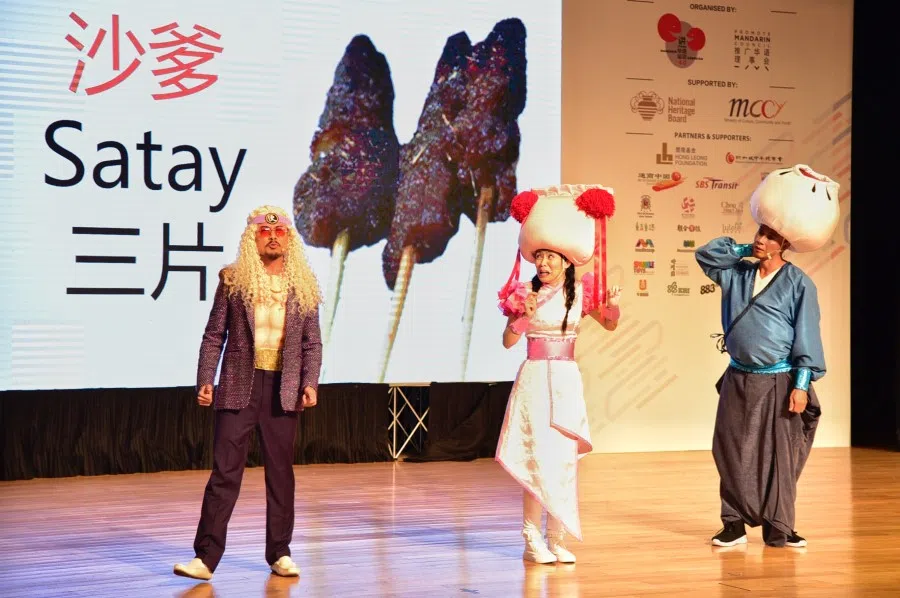Singaporean Mandarin Database: Recognising the uniqueness of the Singaporean Chinese identity
Associate Professor Tan Chee Lay, principal investigator of the Singaporean Mandarin Database, shares some interesting Singaporean Mandarin phrases and says it is time that we recognise our Chinese linguistic features as part of the Singaporean Chinese identity formed in a multicultural social setting.

One would have thought that a repository of Mandarin terms used in daily life, such as basha (巴刹 market), zuwu (组屋 flat) and chongliang (冲凉 to take a shower), and their etymologies would have been compiled ages ago. But this may not be so for Singaporean Mandarin, as some among us are still not confident that our very own Singaporean Mandarin terms could be seen as a unique wealth of language resources.
The linguistic purist among us may think that only the Chinese phrases accepted and used in the standard Putonghua (standard Mandarin in China) deserve to be promoted, while others are concerned that documenting and acknowledging these Singaporean Chinese terms may result in communication obstacles with other Chinese speakers outside Singapore. This self-undermining mindset and nonconfidence is precisely what the Singaporean Mandarin Database hopes to help alleviate.
Adding to the canon of 'Dahuayu'
The database allows us to appreciate the nuances reflected in our vocabulary which shows Singapore's unique identity which is worth recognising and preserving. Compared with how these terms are represented in other regions, we can better appreciate the cultural, historical, or sentimental meaning and value of these terms, and gain an understanding of different sociocultural contexts. In fact, in my numerous interactions with scholars, friends and counterparts from China and Taiwan, all of them are keen to know how and why our Singaporean Mandarin terms are unique, and very few, if not none, have questioned why we have Chinese terms different from them.
... Mandarin used in Singapore is influenced by Singapore's multiracial, multilingual and multicultural society.

Some terms originated from dialects such as Hokkien, Teochew and Cantonese, and some from other languages such as English, Malay or Tamil. This shows that Mandarin used in Singapore is influenced by Singapore's multiracial, multilingual and multicultural society. Hence, by systematically recording these terms and their information in both English and Mandarin, our database builds the confidence and capability of Singaporean Chinese to use Mandarin in different environments, even with native speakers of Mandarin. From a macro perspective, it also enriches the resources of "Chineses" or "Dahuayu" (大华语), a concept gaining traction universally which recognises and encompasses variants of Chinese phrases and usages worldwide.
Currently, 550 terms have been uploaded to the database, and the Mandarin content for 1,000 terms is expected to be completed by the end of 2022.
Launched by Prime Minister Lee Hsien Loong during the 40th anniversary of the Speak Mandarin Campaign in 2019, the Singaporean Mandarin Database research project is on its way to developing a lexicon for Singapore Mandarin through a compilation of 1,000 commonly used Singaporean Mandarin terms. Under the guidance of our expert panel consisting of renowned linguist Professor Chew Cheng Hai, former chief editor of Lianhe Zaobao Lim Jim Koon, and Promote Mandarin Council members, Mdm Heng Boey Hong, Associate Professor Lan Luh Luh and Dr Liang Wern Fook, we conduct in-depth research on the definition and etymology of these commonly used Singaporean Mandarin terms.

Currently, 550 terms have been uploaded to the database, and the Mandarin content for 1,000 terms is expected to be completed by the end of 2022. All these terms selected for the database are in use, whether in the past or at present, whether in conversation or print. They are also of cultural, historical, or sentimental value unique to Singapore. While some terms are currently used in China, they originated in Singapore or other Mandarin-speaking regions. We've also checked - through painstaking efforts - that all 1000 terms are used regularly in our Chinese newspapers.
One critical difficulty is to locate and verify recorded information on the etymologies of terms, as most of them are only verbally passed down over the years.
Ascertaining word origins and meanings
Of course, the research team faces ongoing challenges. One critical difficulty is to locate and verify recorded information on the etymologies of terms, as most of them are only verbally passed down over the years. The research process involves meticulously investigating and piecing together information from reliable sources, which could be very time-consuming. There are also conflicting views from different sources and even considerable hearsay evidence of etymologies, often provided by goodwill members of the public, which we regretfully could not capture due to the lack of substantiated sources.
Take for example the term shadie (沙爹 satay), the Hokkien phrase for "three pieces" (三块, pronounced sann-tè) sounds like the pronunciation for satay, hence some people believe that the name originated from Hokkien. However, as satay is not originally a Chinese dish, it is documented in the database that satay came from the Tamil word catai, which means meat.
These terms are culturally significant and create a sense of camaraderie among Singaporeans when used.

Although the research process has been highly challenging, we do encounter many very interesting - even entertaining - phrases and their etymologies in the research process. Some of these intriguing terms are Chinese names of places, as place names - deeply tied to Singapore's history - often carry cultural and sentimental value.
These names, be they evolved from English, Malay, dialects, or other languages, can usually evoke strong feelings of nostalgia as they have been passed on through generations, and some prominent examples include Dapo (大坡 South Bridge Road area) and Xiaopo (小坡 North Bridge Road area). Additionally, I find the related information, such as the terms luopo (落坡) and xiapo (下坡), meaning "going to (down)town" in the early days, to be some of the most culturally fascinating reads.
More examples can be found in our day-to-day Mandarin speech, including examples cited by PM Lee in his 2022 National Day Rally speech: paituo (拍拖 to go on a date), chifeng (吃风 going on an overseas holiday), haocai (好彩 luckily) and toujia (头家 boss). These terms are culturally significant and create a sense of camaraderie among Singaporeans when used.
... some terms with high pageviews include those of food and festive, such as bak kut teh (肉骨茶 rou gu cha) and Vesak Day (卫塞节 wei sai jie).
Part of the Singaporean Chinese identity
To date, our online database has been discussed and shared in various academic conferences and public forums, both locally and internationally. In addition, the database has been used in local tertiary institutions and Ministry of Education (MOE) schools. MOE's Curriculum Planning and Development Division (CPDD) has selected terms from the database to be included in a Chinese e-dictionary application used in MOE's Student Learning Space (SLS) platform, which is accessible by every student and teacher.
Feedback from academics, schools and the public has been positive and encouraging, showing that the database is recognised and regarded as a valuable and reliable resource by its users. Viewership traffic, both locally and internationally, has been consistent at about over thirty thousand pageviews per month. Not surprisingly, some terms with high pageviews include those of food and festive, such as bak kut teh (肉骨茶 rou gu cha) and Vesak Day (卫塞节 wei sai jie).
Singaporean Mandarin has come a long way since the early days of dialect speaking and the launch of the Speak Mandarin Campaign. It is time that we recognise our Chinese linguistic features as part of the Singaporean Chinese identity formed in a multicultural social setting. The development of the Singaporean Mandarin Database online, and the upcoming publication of a hardcopy bilingual book based on this database are a good testament of our wealth of linguistic resources.
Related: What old Chinese textbooks say about life and times in Singapore | How the 'tree' of Chinese writing united dialects, culture and people through the millennia | How the Shanghai Book Company enlivened Singapore's cultural scene | Trees in a forest: Becoming Chinese Singaporean in multicultural Singapore | Chinese media companies' quest for survival | What does multiculturalism mean in Singapore? | Must one read Chinese to appreciate Chinese calligraphy?

![[Big read] Paying for pleasure: Chinese women indulge in handsome male hosts](https://cassette.sphdigital.com.sg/image/thinkchina/c2cf352c4d2ed7e9531e3525a2bd965a52dc4e85ccc026bc16515baab02389ab)


![[Big read] How UOB’s Wee Ee Cheong masters the long game](https://cassette.sphdigital.com.sg/image/thinkchina/1da0b19a41e4358790304b9f3e83f9596de84096a490ca05b36f58134ae9e8f1)
